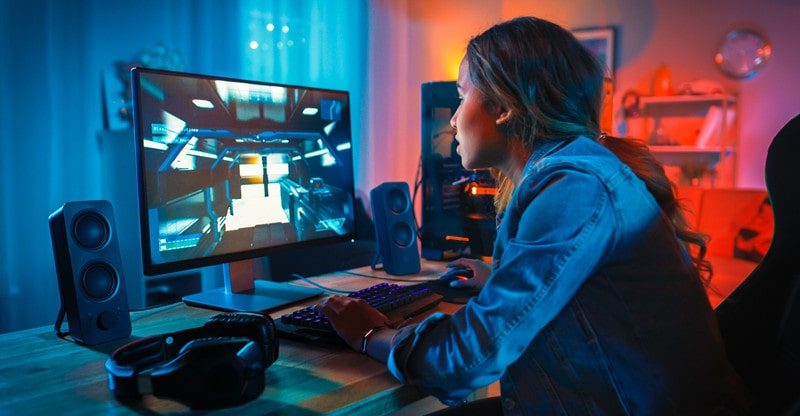How Do Modern Games Achieve Photorealistic Lighting?
Have you ever played a video game and thought, “Wow, this looks almost like real life!”? One of the big reasons for that is photorealistic lighting. To make this happen, game developers use advanced 3D modeling software. This article will take you through the techniques and tools that make video game worlds look so real.
Ray Tracing: Acting Like Real Light
Ray tracing is a fancy way of making light in games look just like real light. It’s like following the path of each beam of light as it bounces around in the game world. This makes the shadows and reflections in games look super real. But there’s a catch—it needs a powerful computer because it’s heavy on resources. Still, the result is amazing, and high-end games use it to make their graphics top-notch.
To make ray tracing work, the computer needs to do a lot of calculations for each ray of light. It’s like following the journey of each beam of light in the game world and figuring out how it bounces off objects. This precise calculation gives one of those incredibly realistic lighting effects in games.
High Dynamic Range (HDR): Seeing More Detail
HDR is like having super eyes in a game. It lets you see more details in really bright and dark parts of the game. It’s similar to how one’s own eyes work. With HDR, things like sunlight look super bright and intense, while shadows look deep and rich. This makes the game’s visuals look more awesome and true to life.
Think of HDR as a special pair of glasses for your game. It lets you see all the bright and dark details more clearly, just like when you put on sunglasses in bright sunlight. This makes the game world feel more alive and immersive.
Baked Lighting: A Smart Shortcut
Game makers sometimes use a trick called baked lighting. They figure out how light should behave in different parts of the game before you even play it. Then, they “bake” this info into the game’s textures. It’s not as flexible as ray tracing, but it’s easier on your computer.
Baked lighting is like making a detailed map of how light should look in the game. It’s like knowing exactly where all the lights and shadows should be in advance. This makes the game run smoother because it doesn’t have to do complex lighting calculations in real time.
Physically Based Rendering (PBR): Real Materials, Real Looks
PBR is a technique that makes sure things in the game act like they would in real life. For example, metal and cloth reflect light differently, right? PBR helps game creators make sure every material in the game behaves realistically. This makes the game feel more like the real world.
Imagine PBR as a set of rules for how things should look in the game. It’s like having a guidebook for how each material should shine, sparkle, or appear dull. This consistency makes the game’s visuals feel more natural and believable.
3D Modeling Software: The Creative Tools
Adobe states, “3D modeling software allows you to create digital representations of three-dimensional objects.”
The role of 3D software can’t be overstated. These programs allow developers to create the game’s environment and characters. They come with a range of features that help achieve photorealistic lighting.
3D modeling is like the artist’s toolbox. It provides the brushes and paints needed to shape the game world. Developers can sculpt landscapes, design characters, and place lights to create the perfect atmosphere. Without these tools, bringing the game world to life would be nearly impossible.
Achieving photorealistic lighting in video games is no small feat. It involves advanced techniques like ray tracing, HDR, baked lighting, and Physically Based Rendering. And, of course, none of this would be possible without powerful 3D modeling. The result is a gaming experience that looks so real you might forget you’re playing a game at all.



